Hibiscus (Chinese rose): description, features of care and growing
Hibiscus is a bright tropical plant that can be grown even in an ordinary city apartment. What conditions for this need to be created is described in this review.
Description of Chinese rose
The name "hibiscus" is applied to a whole genus of plants of the family Malvaceae, consisting of shrubs and trees, perennial and even annual herbs.
Chinese hibiscus (also known as the Chinese rose) is directly related to the Celestial Empire: its homeland is the northern part of the Indochina peninsula and, accordingly, the southern part of the modern People’s Republic of China. Currently, this ornamental shrub, reaching three meters in height, can be found in almost all regions of the globe. In tropical and subtropical countries, the plant has taken root for a long time and is strong, and in regions with a more severe climate it is quite successfully grown by experienced gardeners in the open ground either in greenhouses or as a houseplant.
| Type of | Bush |
| Height | Up to 4, 5 m |
| Root system | Rod |
| Leaves | Dark green, carved and petiolate |
| Flowers | Bright red, large (up to 16 cm in diameter) and delicate, with a long decorative whisk |
| Fetus | Five-leaf box |
In addition to the Chinese rose (Hibiscus rosa-sinensis), in nature there are about two hundred and fifty varieties of hibiscus, and thanks to the efforts of breeders, this number can be doubled.
Among the most common plant species, Hibiscus is worth mentioning:
- syriacus (Syriac, also called Ketmiya, Syrian rose, or Rose of Sharon);

- cannabinus (hemp, or Kenaf);
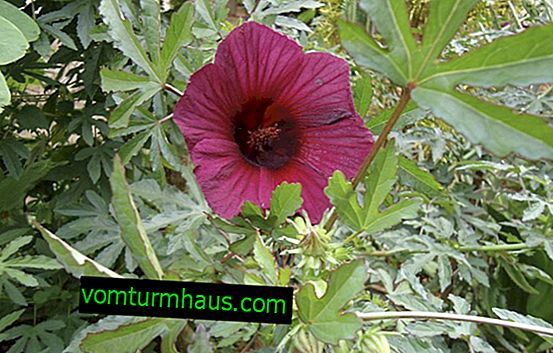
- trionum (triple or northern);
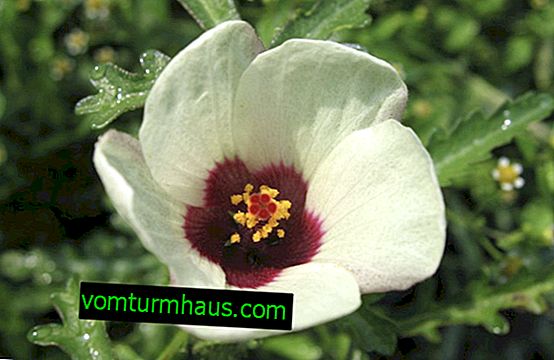
- sabdariffa (Rosella, or Sudanese rose);
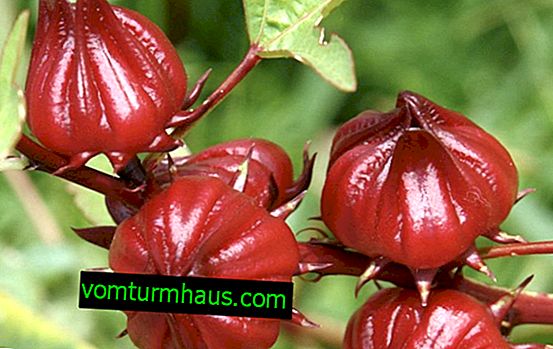
- mutabilis (mutable);
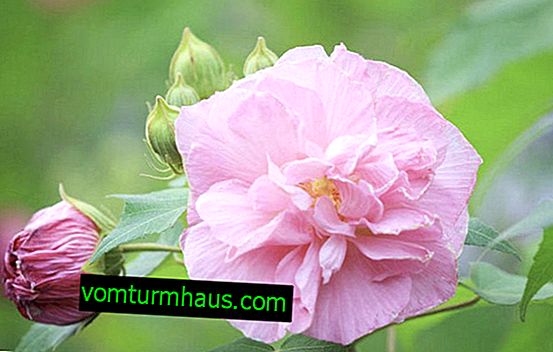
- schizopetalus (dissected);

- drummondii (Drummond);
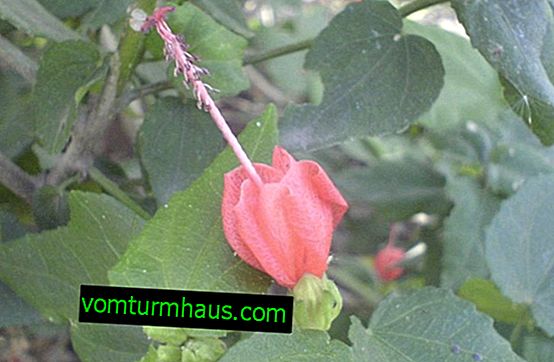
- moscheutos (marsh);

- hybridus (hybrid);
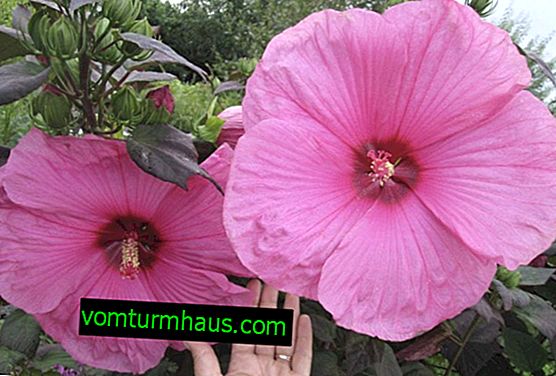
- arnottianus (Arnotti);
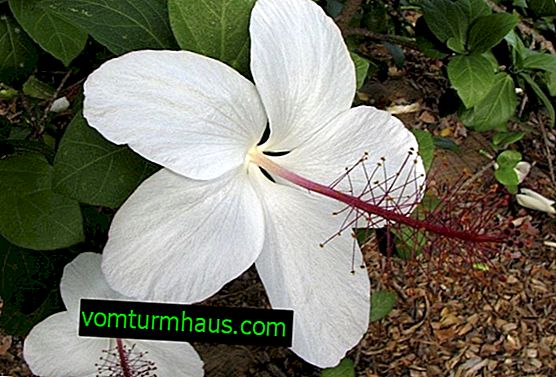
- divaricatus (widespread);

- lasiocarpos (shaggy);

- esculentus (edible, or okra).

Did you know? The world-famous fragrant red tea "Karkade " is brewed from the petals of Sudanese rose. But hemp hibiscus in many countries is grown for use in the textile industry. Fine natural threads twist from it.
Among the most successful hibiscus hybrids are the following:
- Allure (Allure);

- White Diamond (White Diamond);
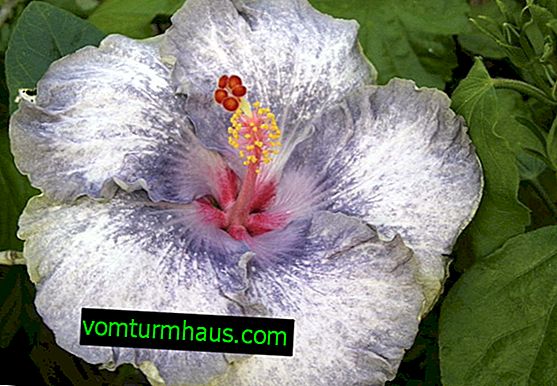
- Cloudy Days
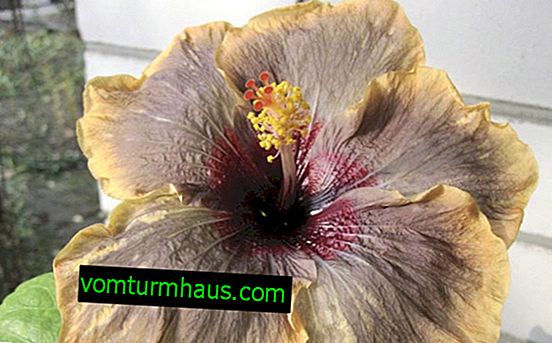
- Snowy Sky ;
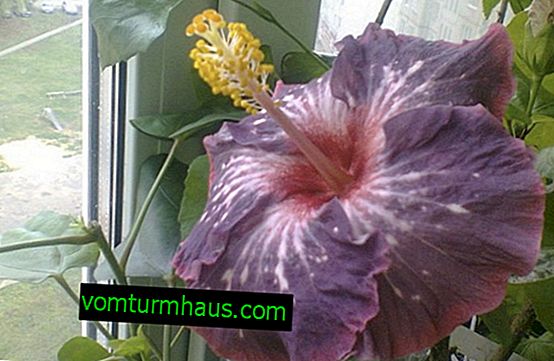
- Dark of Night ;

- Marianne Charlton (Marianne Charlton);

- Magic Mission (Magic Mission);
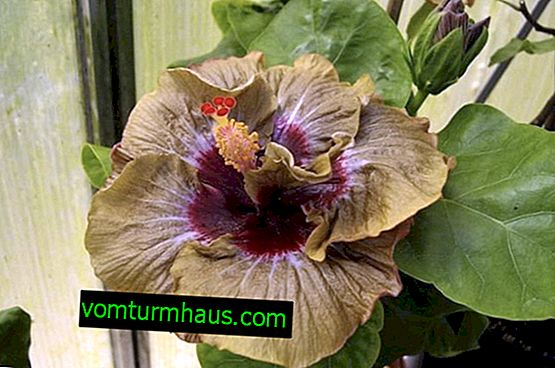
- Wall Flower .
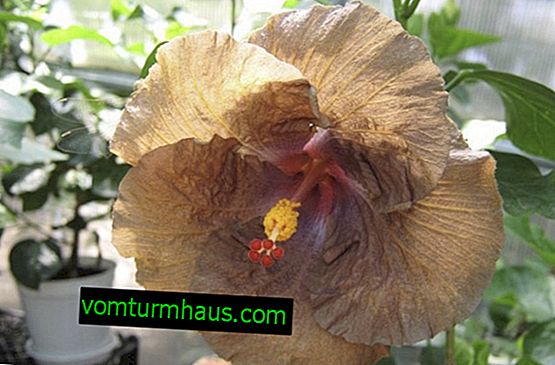
Can I keep hibiscus at home?
Many are afraid to keep hibiscus at home, since many superstitions are associated with this plant. In Europe, it is called not only the “Flower of Death", but an even more frightening nickname - the "Bloodthirsty". It is difficult to say how the Chinese rose has earned such fame, but people say that:
- if hibiscus has blossomed in the house, it means that soon one of the family members will die;
- blood-red color The Chinese rose receives, eating the blood of people living in the house;
- if the hibiscus is in a dwelling where there is an unmarried girl, the hostess will have many admirers, but she will never find a groom and husband. The woman is already married - the family will soon fall apart (another unpleasant name for the flower is “husband”);
- the withered and dead Chinese rose in the house is a faithful messenger of a serious illness of one of the household members. According to other sources, the state of the flower directly reflects family relationships (the plant looks healthy - the family has peace and quiet, but when the flower is sick, squabbles and quarrels begin between the spouses).

To counterbalance such an unfair attitude, it is worth noting that the notoriety behind hibiscus has strengthened exclusively in Europe. In the East, where this plant comes from, completely opposite associations are associated with it - it is called the “flower of love”, and Indian girls weave the “hubby” in the bride’s wreath before the marriage ceremony.
Did you know? Hibiscus is one of the official symbols of the Republic of Haiti and Malaysia, where its image is minted on coins. The emblem of South Korea, approved in 1963, has the traditional sign "Yin and Yang", symbolizing peace and harmony, surrounded by five petals of the Syrian rose (Hibiscus syriacus). Thus, the answer to the question of whether to keep the Chinese rose at home directly depends on which of the two opposite in spirit supernatural powers of this flower a person prefers to believe (or not to believe).
Conditions of detention
Those who are skeptical of superstition and want to decorate their home with a decorative plant with beautiful flowers should be aware of the basic requirements that a Chinese rose has for the conditions of detention. For clarity, they are given in the form of a table:
| Optimum temperature during the growing season | +20 ° C |
| Optimum resting temperature | +16 ° C |
| Minimum allowable temperature | + 10 ° C |
| Optimum air humidity | 70% |
| Optimal lighting conditions | The plant is photophilous, but it should be protected from direct sunlight. The best place in the apartment is windows facing east or west. |
| Soil moisture requirements | During the growing season - a high degree of humidity, during the dormant period, watering should be reduced. |
In summer, the Chinese rose can be (and even preferably) taken out into the open air, providing protection from strong winds, the scorching sun or heavy rainfall. All these factors can damage not only delicate flowers, but also decorative hibiscus leaves.
Home Care
Those who do not know how to care for a Chinese rose should bear in mind that this flower needs to be respected and irrigated, as well as a timely and proper transplant. Since we are talking about a tall bush, it needs to be shaped to make it look beautiful indoors.
Watering and feeding
All tropical plants love high humidity, and the Chinese rose is no exception. It should be watered abundantly, however, only during the period of the active phase of flower development (from February to October). When daylight hours are shortened and room temperatures become lower, excessive watering can harm both roots and leaves.

Important! Do not leave water in the pan for a long time or use lower watering when caring for hibiscus. In this case, mineral substances are washed out of the soil, which adversely affects the development of the plant. Foliar watering (spraying, or sprinkling) for the Chinese rose is very useful.
Such procedures can be carried out even during a period of rest (especially if the air in the heated room becomes excessively dry). As with irrigation, warm and well-defended water is used for sprinkling.
As for feeding, hibiscus needs them only during the growing season. For these purposes, complex fertilizers are often used for flowering indoor plants ("Rainbow", "Ideal"). A large amount of phosphorus, which is usually included in such mixtures, to a Chinese rose can do more harm than good. Therefore, when choosing a remedy, it is better to focus on the high content of nitrogen, potassium, and magnesium in them, which provides a beautiful emerald color to hibiscus leaves. In addition to mineral fertilizing, from time to time it is necessary to enrich the earth with organic matter.

- hibiscus can be fed with root and foliar (leaves) methods;
- before applying fertilizer to the ground, it must first be watered so that mineral substances in large concentrations do not burn the roots;
- in sunny weather, it is undesirable to feed the plant (it is better to transfer the procedure to late evening);
- young plants fertilize more often. For adults, the frequency can be reduced (the optimal frequency of fertilizer application, respectively, varies from once a week to once a month);
- Do not fertilize in a pot with a freshly transplanted plant.
Learn how to feed indoor plants at home.
Transfer
Transplantation is needed for indoor flowers for two reasons - to enrich the soil and obtain additional space for the developing root system. Depending on how critical the solution of the first problem is (in what condition the substrate is in the pot), two versions of this procedure are used - transplantation and transshipment.
In the latter case, the plant moves into a new pot along with an earthen lump. At the same time, a small amount of fresh soil mixture is introduced into the tank. Such a method for a plant is more preferred. For this reason, it is so important to regularly feed the flower and prevent soil depletion.

Such a substrate can be prepared independently by mixing sheet or sod soil with humus and sand (the last two components are taken in a ratio of 10% of the main soil composition). As a potash fertilizer (and at the same time for disinfection), a small amount of wood ash can be added to the mixture. The inclusion of peat in the substrate is also welcome. The immature organic matter in the manufacture of the soil mixture for the Chinese rose should not be used.
Important! Almost all indoor plants are best transplanted at the beginning of an active increase in daylight hours - from mid-February to late March. To protect the root system of the hibiscus from decay, drainage holes should be provided in the pot. A thick layer of expanded clay, fine gravel, coarse sand or other material is laid at the bottom, which will ensure the outflow of excess water.
Video: Hibiscus transplant
Cropping and shaping
Proper pruning of hibiscus is a science. However, it is still necessary to comprehend it, because otherwise the bush will never look decorative, will begin to bend, and this process will very soon become irreversible. If the shoots are not cut in time, this will negatively affect the condition of the leaves and flowers of the Chinese rose, since the plant will spend the main vitality on maintaining old and weak branches.
There are several varieties of pruning that you need to be able to distinguish from each other.
Topping
Pinching is the shortening of the tops of young plants in order to make them branch. Before carrying out such a procedure, the trunk must be tied up by installing a solid support next to it (you can use a sushi stick or a pencil). Then remove the upper part of the trunk so that about five leaves remain on the plant. After the lateral shoots form the same number of leaves, they are also pinched from above. Thus, the desired number of new branches is formed. To make the crown as uniform as possible, branches growing parallel to the central (the so-called tops) should always be removed.
Important! In changing the phases of the moon, you should not engage in complex work with flowers in order to avoid problems. This also applies to hibiscus. You can do watering, spraying, but it is better to refuse transplants, pinching and fertilizers. At the stage of formation of a young plant, it is very important to regularly feed it with nitrogen fertilizers, since it is this element that provides a quick set of green mass.

Selective cropping
As the bush forms, the weakest branches, as well as shoots on which there are no living leaves, must be selectively removed from it. If the branch is very thin, it is also better to trim it, leaving a process from two or three internodes.
Corrective
In order for the crown to form symmetrically, it must be constantly adjusted. For example, if a plant is lit unevenly, the number of branches from different sides can be uneven. It is advisable not to allow this. However, if this happens, excessively overgrown side shoots will have to be removed to the base.
Important! At home, the Chinese rose can grow thirty years or even longer. To correctly form the crown of the bush, it will take at least three years.
As the Chinese rose grows, they also get rid of excessively branched side shoots (first at the level of two or three buds, and in subsequent years - at the level of one kidney). Thin side branches are always removed, leaving the strongest shoots to form the crown.
Video: Hibiscus pruning
Strong
Launched bushes of the Chinese rose, which lose their shape, develop unevenly and lose all their decorativeness, need cardinal pruning. This procedure involves performing two sequential actions: first, all dry, twisted or diseased branches are removed. Then all other shoots are shortened by two-thirds of their length (this applies not only to the main branches, but also to the lateral and internal branches).
You need to cut the branches arbitrarily, so that the length of the left shoots is different. The main stem should remain the longest, this will give the bush naturalness.
After such a rejuvenating procedure, the plant receives a powerful impetus to a new development. And if you follow the formation of new shoots, pinching them in time, you can quickly get a very beautiful decorative crown, consisting of a large number of young branches and fresh leaves.

Rose propagation
There are two ways to grow hibiscus at home:
- from seeds;
- rooting cuttings.
The procedure is best carried out in late winter - early spring. Then the container is covered with a film or glass and placed in a warm place for germination (optimal temperature - +25 ° C). After emergence, the film is removed.

The first flowering of a Chinese rose grown by seed can be expected in the third year.
Important! There is no need to look for sales or collect seeds on your own - just use the shoots that are removed in the process of forming or rejuvenating pruning. The vegetative method of breeding hibiscus is also not difficult. Acting with a sharp knife, the cuttings must be shortened so that three internodes remain on them. Then a procedure similar to planting seeds is performed: the cuttings are kept in a growth stimulator and buried in a moistened mixture of peat and sand. The containers are covered and placed for rooting in a warm place. This process takes approximately 30 days. Then the plants are transplanted into the usual hibiscus soil mixture for further growth.
Pest and Disease Control
One of the most common questions that arise when growing a Chinese rose is related to why the plant does not bloom. There are many reasons for this problem. But all of them are connected with the fact that the conditions of the plant are too different from natural ones. For example, a lack of flowering may be caused by:
- lack of lighting;
- high air temperature (buds on hibiscus begin to form at a temperature of +15 ° C);
- excessive watering (when the plant leaves the dormant period and is ready to bloom, the earth does not need to be too wet - otherwise the bush will begin to actively form green mass at the expense of flowering);
- violation of development phases (if the Chinese rose is not provided with a full dormant period in winter, a flowering program for next year will not be formed);
- too large a volume of the pot (the same rule applies to all flowering plants: they should be a bit crowded in the flowerpot. The plant will not bloom until its root system fills the entire space of the pot);
- incorrect pruning or lack thereof (the Chinese rose lays buds only on the upper young shoots; to stimulate their growth, the old ones must be constantly shortened);
- недостатком или дисбалансом питательных веществ в почве (это могут быть дефицит фосфора и избыток азота).

Заболевшее растение подкармливают железом (причём лучше вносить его не под корень, а опрыскивая листья). Для этих целей можно использовать один из проверенных препаратов:
- «Микро-Fe»;
- «Феровит»;
- «Феррилен»;
- «Хелат железа»;
- «Брексил-Fe»;
- «Антихлороз».
Иногда Китайская роза подвергается атакам вредителей. Чаще всего заражение происходит от других комнатных растений, хотя источником проблемы может быть также необработанная почва. Паразит может быть занесён в помещение ветром, а также попасть на цветок с шерсти домашнего животного или одежды домочадцев.

- aphids;
- щитовку;
- мучнистого червеца;
- spider mite;
- thrips;
- белокрылок.
Но меры борьбы со всеми поражающими комнатные растения насекомыми очень схожи. При появлении первых признаков проблемы (пятен на листьях, бляшек, паутинных нитей, липких потёков) листья и стебли Китайской розы следует тщательно вымыть мыльным либо спиртовым раствором (или обработать кашицей из хозяйственного мыла и натёртого лука / чеснока). Проследите, чтобы подобная смесь не попала в почву. Если болезнь прогрессирует, цветок нужно обработать специальным препаратом.

- “Akarin”;
- "Actellik";
- "Actofit";
- Apollo
- «Вермитек»
- Fitoverm;
- "Fufanon."
Для тех, кто не суеверен и не боится распускания в собственной спальне кроваво-красного «цветка смерти», это растение поможет превратить унылую городскую квартиру в островок настоящего тропического леса.
Reviews
На то что бы вырос большой куст необходимо время. Размножается гибискус неодревесневшими черенками, так что срезать нужно верхушечные черенки 10-15 см.. По моему опыту укоренять черенки лучше в земле. Все листья кроме макушечных надо обрезать. После 2 -3 сочленения черенок надо обрезать наискось. Земля увлажняется порядочно, затем черенки втыкаются в землю на 3-5 см. Сверху горшок накрывается банкой. Проветривать надо раз в 15 дней. Необходимо следить, что бы не земле не появлялась плесень, в этом случае надо плесень удалить а землю подсушить на солнце не накрывая горшек банкой. На укоренение может уйти 2-4 месяца. inozemka //forum.bestflowers.ru/t/gibiskus.480/#post-170
























